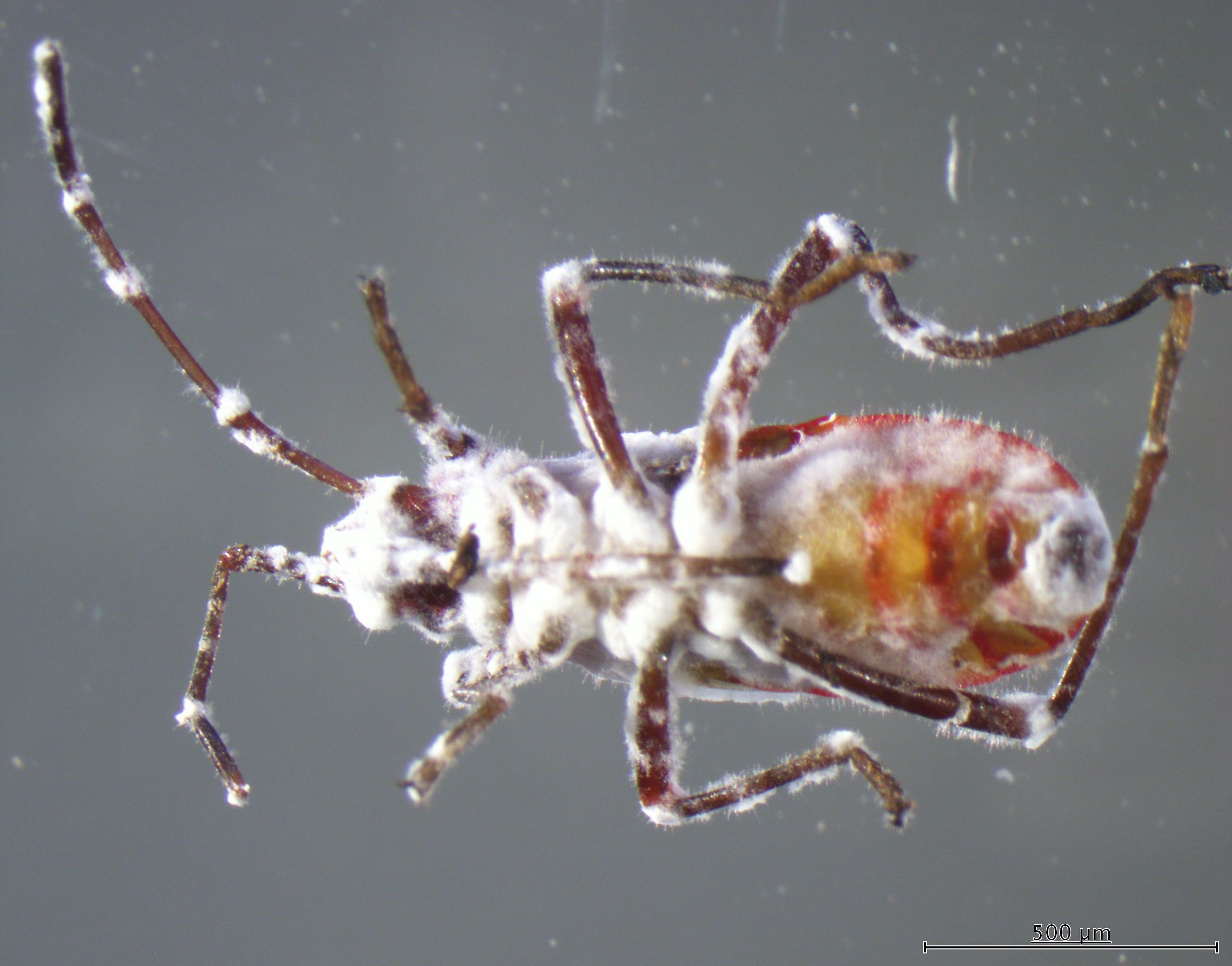Could fungi really be the last of us?
Inside the threat of Cordyceps — the very real fungus at the centre of the latest TV smash hit

The Last of Us has become a global television phenomenon, breaking records and receiving rave reviews in its debut season.
The post-apocalyptic zombie smash hit takes place 20 years after the collapse of civilisation, due to the rapid growth and spread of a real-life fungus called Cordyceps.
Based on the critically acclaimed video game of the same name, The Last of Us has scared, shocked, and made us fall in love with its characters.
But how realistic is the spread of Cordyceps? UQ researchers, Dr Leela Maya Rizal and Dr James Hereward, from the School of Biological Sciences, dissect the truth about this unique fungus.
Cordyceps: what is it and what is it really capable of?
Cordyceps and related fungi are what is referred to as entomopathogenic fungi, explains Dr Hereward. This means that they infect and kill insects. These fungi are highly specialised to their insect hosts and are not going to cause a human pandemic. There are some other fungi that can infect people, but they are much less dramatic.

Ellie and Joel, portrayed by Bella Ramsey and Pedro Pascal, are the 2 main characters in The Last of Us. Image: HBO
Ellie and Joel, portrayed by Bella Ramsey and Pedro Pascal, are the 2 main characters in The Last of Us. Image: HBO
PhD candidate Dr Rizal says a fungal epidemic may not be possible because, to date, there is no record in history of a fungal epidemic. A fungal pathogen must fulfil 4 basic conditions in order to infect a human:
- Have a high temperature tolerance
- The ability to invade the human host
- Be able to lysis and absorb human tissue
- Overcome to the human immune system.
Invasive fungal disease is rare in healthy individuals because animals’ sophisticated immune systems evolve in constant response to fungal challenges.
Are there other fungi that we should be concerned about?
Although it is unlikely for an insect specialist fungus to infect humans, there is a group of fungi called Fusarium, which are loosely related to Cordyceps and Beauveria, Dr Hereward says. The species in this group normally infect plants and insects, but some of them do infect humans. There are reports of Cordyceps infecting insect hosts from different orders, suggesting that major host shifts have occurred within the insect kingdom.

An insect infected by Cordyceps. Image: Adobe Stock/vincentpremel
An insect infected by Cordyceps. Image: Adobe Stock/vincentpremel
We should be more concerned about Candida auris, explains Dr Rizal. The spread of Candida auris is an emerging healthcare-associated pathogen and ongoing outbreaks in hospitals are resulting in significant mortality. Candida auris has spread to all continents except Antarctica, and has been identified in many parts of the human body, including bloodstream, urine, respiratory tract, biliary fluid, wounds, and the external ear canal. It has also caused bloodstream infections, wound infections, and ear infections.
“Patients may be asymptomatically infected with Candida auris on skin, nares, oropharynx, rectum, and other body parts,” Dr Rizal says.
“Patients infected with Candida auris can transmit it to other patients within healthcare facilities and may be at risk of invasive infections.”
Dr Rizal says Candida auris is a significant human fungal pathogen because it is often 'multidrug-resistant'. Some strains are resistant to all classes of antifungals. It is difficult to identify with standard laboratory methods, and it can be misidentified in labs without specific technology. Misidentification may lead to inappropriate management, Dr Rizal says. For this reason, it is important to quickly identify Candida auris in a hospitalised patient so that healthcare facilities can take special precautions to stop its spread.
What is the latest UQ research telling us about fungi in Australia?
During her PhD at UQ, Dr Rizal used dead insects to bait fungi from soils collected around the Brisbane area. The overall goal of this work was to find environmentally-friendly pesticides by surveying the natural diversity of insect-killing fungi in Brisbane.

Cotton stainer bug infected by B. bassiana collected from UQ lake soil. Image: Dr Leela Maya Rizal
Cotton stainer bug infected by B. bassiana collected from UQ lake soil. Image: Dr Leela Maya Rizal
“We used genomics to sequence all the fungi strains that Leela collected and did find one Cordyceps but also a lot of Beauveria and Metarhizium (the genus Beauveria is very closely related to Cordyceps),” Dr Hereward says.
“One interesting finding of Leela’s work is that we found much more diversity using genomics than people had with previous methods. This suggests that there are more species of insect-killing fungi than previously thought, and each of these is a potential new tool for insect control in agriculture.”
Dr Rizal has a research paper on Hidden diversity within Beauveria and Metarhizium–comparing morphology, barcoding, multilocus phylogenies and whole-genome sequences due to be released later this year.


Dr Leela Rizal is a PhD graduate in Mycology, Insect Pathology, Plant Pathology at The University of Queensland. Dr Rizal is currently a Insects and Plant Pathologist at Agri-Food and Data Sciences, Department of Agriculture and Fisheries.
Contact: l.rizal@uq.net.au

Dr James Hereward is a Postdoctoral Research Fellow at the School of Biological Sciences.
Contact: j.hereward@uq.edu.au
